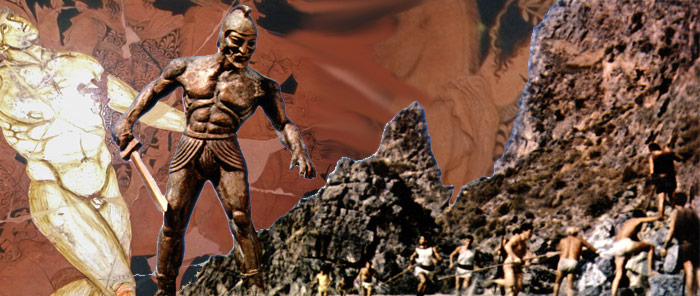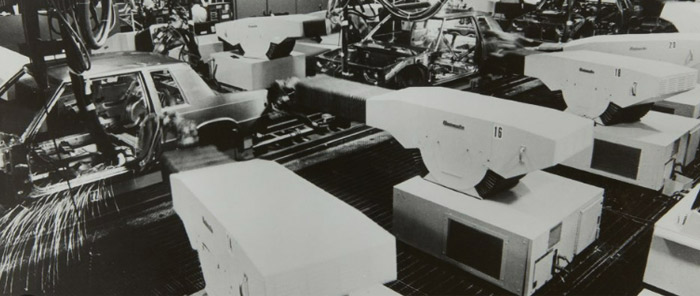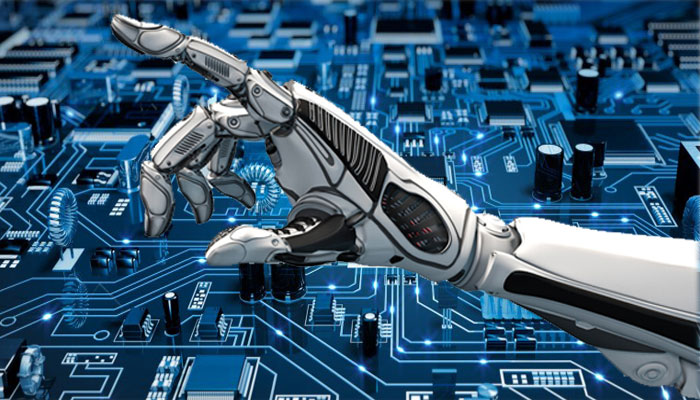Creating mechanical robots that can perform tasks independently has been around for centuries. The development of robots began to pick up in the early 1900s with the rise of the industrial revolution and the increasing need for automation in manufacturing. The first patent for an automated machine was issued in 1901 to John Henry Holmes. This machine was designed to automate the laying of bricks, but it was unsuccessful.
But, the
first robot in the modern sense of the word was built by George Devol in the fifties. It was called "Unimate." It was a robotic arm capable of performing
simple tasks such as welding, painting, and moving materials in a factory
setting.
The Myths Of Robots
Before the
first generation of robots, the concept of robots was mainly found in myths and
legends that featured mechanical beings. These mechanical beings were often
portrayed as servants or assistants to the gods or humans.
In Greek
mythology, the god of metalworking, Hephaestus, was said to have built metal
assistants to aid him in his work. In Jewish folklore, the Golem, a clay
creature brought to life by a rabbi, was said to have protected the Jewish
community in medieval Prague.
The word "robot" was used in a play called "Rossum's Universal Robots" (R.U.R), written by Czech playwright Karel Capek in 1920. In Czech, 'robota' means 'labour' or 'chore.'
These legends and myths gave rise to the idea of creating mechanical beings to aid human endeavors. However, the " Pigeon-Guided Missile " was the first physical robot-like machine built and demonstrated" in the 1930s. It was not an autonomous robot, but it was the first demonstration of a machine that could be remotely controlled.
What Are the 5 Generations of Robots?
Looking back in history, we come across devices that can make robot illustrations or mechanical movements. A robot is an electro-mechanical device that can perform pre-programmed tasks. You can see different date ranges in different sources for robot generations. In this article, we accept the patent date of the first robot that fits the robot definition as the starting point.
1. First Generation Robots (1954-1959):
The first robot patent to fit this description was received by George Devol in 1954. This venture later laid the foundations for the modern robot industry.
The first generation of robots was mainly used for simple, repetitive tasks such as assembly line work. They were typically large, slow, and could have been more precise. They were controlled by hardwired programs and could not adapt to environmental changes. These robots were mainly used in manufacturing settings and were typically operated by a single control unit.
2. Second Generation Robots(1959-1968):
In 1959, Unimate #001 was installed as General Motors facilities' first working robotic arm. In 1961, the Unimate 1900 series became the first robotic arm to enter mass production for factory automation.
Second-generation robots featured sensors and feedback control systems that allowed them to perform more complex tasks and adapt to environmental changes. They also became smaller and more precise. These robots were mainly used in the manufacturing industry, and the introduction of sensors allowed them to perform more complex tasks, such as drilling and spot welding.
3. Third Generation Robots (1968-1984):
In 1968, the octopus-like Tentacle Arm was developed by Marvin Minsky. The electrically powered Stanford Arm, made in 1969, was the first computer-controlled robotic arm.
The third generation of robots saw the introduction of computer control systems, which made them even more versatile and precise. They were also able to perform tasks such as welding and painting. They became smaller, more precise, and versatile, used in welding, painting, and material handling applications.
4. Fourth Generation Robots (1984-1994):
The fourth
generation of robots saw the introduction of advanced sensors, such as vision
systems, which allowed them to "see" and understand their
environment. They also became more mobile, introducing robots that could move
around on wheels or tracks. These robots could perform more complex tasks, such
as navigating a room, avoiding obstacles, and manipulating objects. They also
became more versatile and used in various applications, such as the
service industry.
The fourth generation of robots was greatly impacted by several key technologies, including:
a. Sensors: The integration of advanced sensors, such as cameras and tactile sensors, allowed robots to perceive and respond to their environment in real-time. This made them more versatile and able to perform a wider range of tasks.
b. Computer Control: The use of computer control systems, including microprocessors and embedded systems, allowed robots to become more sophisticated and execute more complex movements and tasks.
5. Fifth Generation Robots (1994-Present) :
The fifth generation of robots is mainly characterized by the integration of AI, machine learning, and other advanced technologies, allowing them to perform more complex tasks, adapt to new situations and make decisions independently. They are also more flexible and are able to work in unstructured environments. They are used in various applications, such as healthcare, transportation, and entertainment.
The fifth generation of robots was greatly impacted by several key technologies, including:
a. Artificial Intelligence (AI): The development of AI algorithms, such as machine learning and computer vision, enabled robots to make decisions based on the data they collected from their sensors. This allowed them to perform more complex tasks, such as recognizing objects and human emotions.
b. Human-Robot Interaction (HRI): The development of HRI technologies, such as speech recognition and natural language processing, allowed robots to interact more effectively with humans. This made them more usable and accessible for a wider range of applications.
c. Networking: The widespread adoption of networking technologies, such as the Internet and cloud computing, allowed robots to share data and interact more effectively with other devices and systems. This has enabled new applications, such as telerobotics and collaborative robotics.
Robot Industry Still Growing
It's worth noting that these generations do not have strict boundaries, and the advancements in robotics are continuous and ongoing. Some researchers and practitioners may include more generations or different criteria for classifying them. Also, the capabilities and performance of robots have been continuously improving. Now, robots can perform tasks that were once thought impossible for machines to accomplish, such as walking on two legs, climbing stairs, and even performing surgery.
Conclusion
Robots have
come a long way since their inception in the 1950s. Robots' capabilities have
grown significantly with each generation. Robotics has advanced significantly
since the first robots were developed in the 1950s. The development of robots
is often divided into five generations, each characterized by certain
technological advancements.
Robotics is
now used in various applications, from manufacturing to healthcare.
Technological advances, particularly in electronics, have enabled
engineers to create more complex robots. Its use is likely to continue to grow
as technology advances.
Written by: Aykut Alan






















COMMENTS